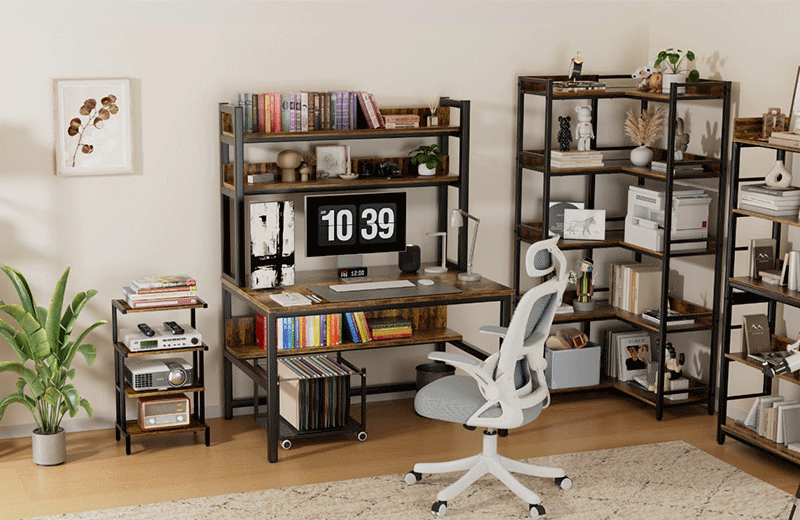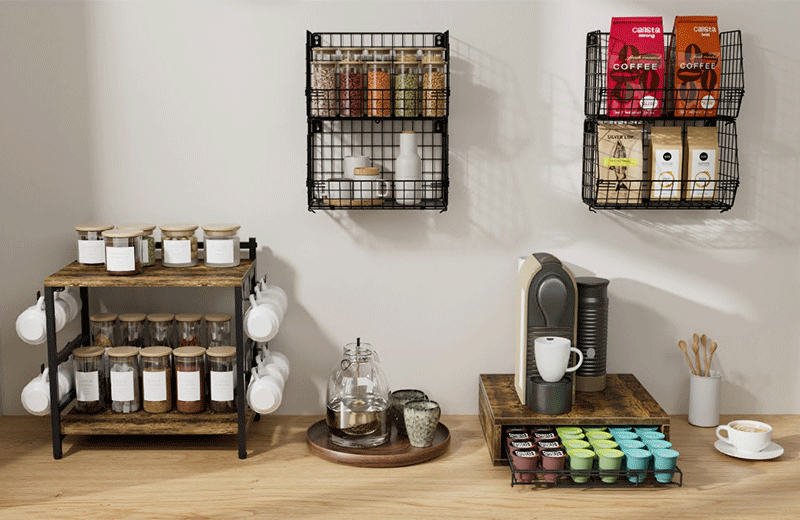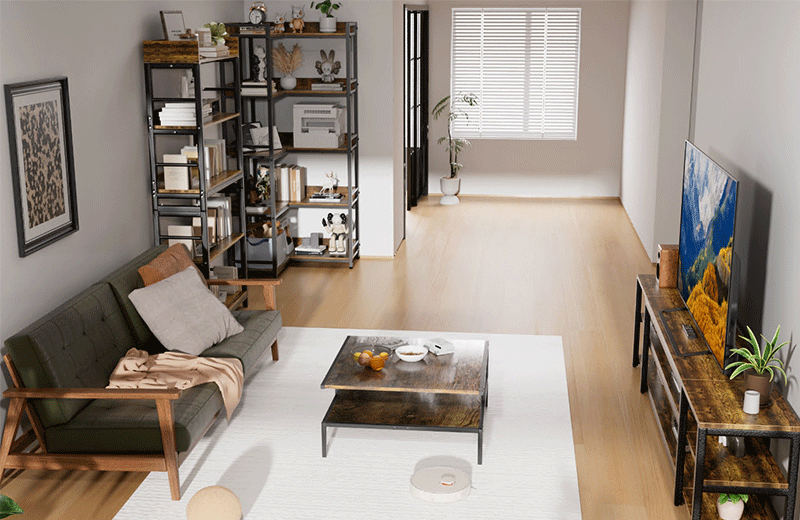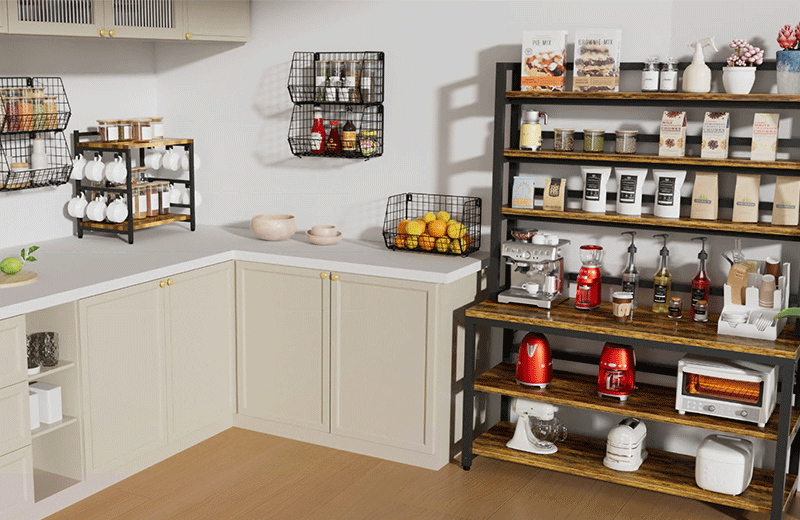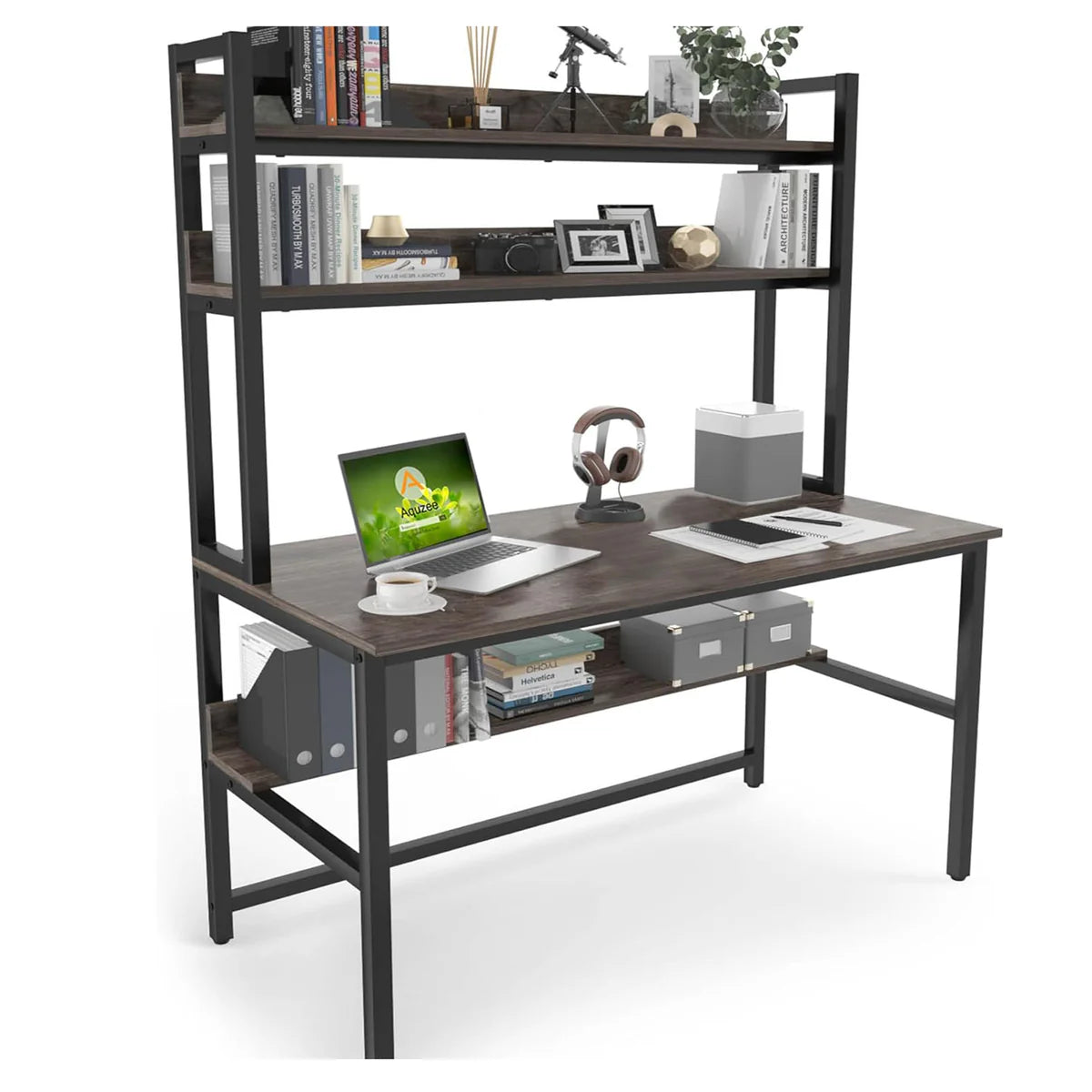When it comes to constructing a computer desk with a hutch, the choice of materials is crucial for ensuring durability, functionality, and aesthetic appeal. A well-built computer desk with hutch can significantly enhance your workspace, providing ample storage and a comfortable area for both work and relaxation. Here, we will explore the best materials for building such a desk, considering various factors like strength, durability, appearance, and cost-effectiveness.
Wood
Wood is a classic and versatile material for constructing computer desks with hutches. It offers a warm, inviting look that can complement various interior design styles. Here are some of the best wood options:
-
Oak: Known for its strength and durability, oak is an excellent choice for a sturdy desk frame. It has a natural grain that adds character and can be finished in various ways to match your decor.
-
Maple: Maple is another strong and attractive wood, often chosen for its sleek appearance and ease of maintenance. It can be stained or painted to achieve the desired look.
-
Pine: Pine is a more affordable option that still provides good quality. It has a soft, natural look that is perfect for creating a cozy workspace. However, it may not be as durable as harder woods like oak or maple.
Metal
Metal is another excellent choice for a computer desk with a hutch, offering a modern and sleek aesthetic. Here are some popular metal options:
-
Steel: Steel is incredibly strong and durable, making it ideal for constructing a sturdy desk frame and hutch. It can be powder-coated in various colors to match your style and is resistant to scratches and dents.
-
Aluminum: Aluminum is lightweight yet strong, making it a great choice for those who prefer a more portable desk. It is also corrosion-resistant and can be anodized for a variety of finishes.
Glass
Glass adds a contemporary touch to any computer desk with a hutch. It is both elegant and functional, offering a clear view of your workspace while providing ample storage. Here are some considerations for using glass:
-
Tempered Glass: Tempered glass is stronger and safer than regular glass, making it a wise choice for a desk surface. It is also easy to clean and maintain.
-
Glass Tops with Metal or Wood Frames: Combining glass with metal or wood frames can create a visually appealing and durable desk. The glass top provides a sleek surface, while the frame offers stability and additional storage options.
Composite Materials
Composite materials offer a blend of strength, durability, and affordability. They are often used in modern furniture construction and can be a great option for a computer desk with a hutch. Here are some popular composite materials:
-
Laminated Wood: Laminated wood consists of multiple layers of wood veneer bonded together with adhesives. It is strong, durable, and resistant to warping, making it an excellent choice for desk construction.
-
Fiberboard: Fiberboard, such as MDF (Medium-Density Fiberboard), is a versatile material that can be easily shaped and finished. It is affordable and provides a smooth surface for painting or staining.
Considerations for Building a Computer Desk with Hutch
When selecting materials for your computer desk with hutch, consider the following factors:
-
Durability: The desk and hutch will likely see heavy use, so choose materials that are sturdy and long-lasting.
-
Aesthetic Appeal: Select materials that complement your interior design and create the desired look for your workspace.
-
Ease of Maintenance: Opt for materials that are easy to clean and maintain, ensuring your desk stays looking great over time.
-
Cost: Determine your budget and find materials that offer the best value for your money without compromising on quality.
-
Weight Capacity: Ensure the materials you choose can support the weight of your computer, monitor, and any other items you plan to place on the desk.
DIY vs. Professional Construction
Building a computer desk with a hutch can be a rewarding DIY project, but it requires some basic woodworking skills and tools. If you're not confident in your abilities, consider hiring a professional or purchasing a pre-assembled desk that meets your needs.
Conclusion
Choosing the right materials for building a computer desk with a hutch is essential for creating a functional and aesthetically pleasing workspace. Whether you opt for traditional wood, modern metal, sleek glass, or versatile composite materials, make sure to consider factors like durability, appearance, maintenance, cost, and weight capacity. With careful planning and selection, you can build a computer desk with a hutch that enhances your productivity and adds style to your home or office.

